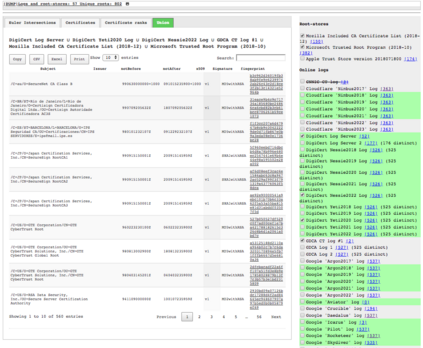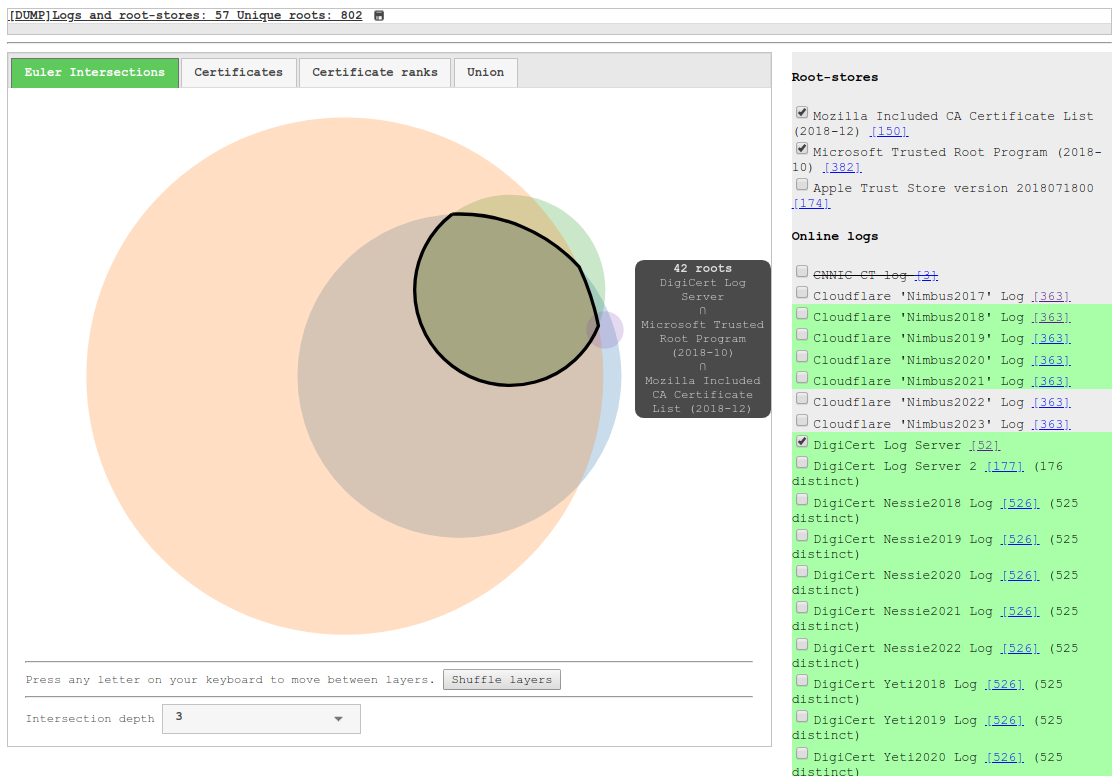Internet security and privacy stand on the trustworthiness of public certificates signed by Certificate Authorities (CAs). However, software products do not trust the same CAs and therefore maintain different root stores, each typically containing hundreds of trusted roots capable of issuing "trusted" certificates for any domain. Incidents with misissued certificates motivated Google to implement and enforce Certificate Transparency (CT). CT logs archive certificates in a public, auditable and append-only manner. The adoption of CT changed the trust landscape. As a part of this change, CT logs started to maintain their own root lists and log certificates that chain back to one of the trusted roots. In this paper, we present the first characterization of this emerging CT root store landscape, as well as the tool that we developed for data collection, visualization, and analysis of the root stores. We compare the logs' root stores and quantify their changes with respect to both each other and the root stores of major software vendors, look at evolving vendor CT policies, and show that root store mismanagement may be linked to log misbehavior. Finally, we present and discuss the results of a survey that we have sent to the log operators participating in Apple's and Google's CT log programs.
翻译:由验证局(CAs)签署的公共证书的可信度的互联网安全和隐私立场。然而,软件产品不信任同样的CA,因此保留不同的根库,每个软件产品通常都含有数百个可靠的根,能够为任何领域签发“受信任”证书。错误签发证书的事件促使Google实施和执行证书透明(CT)。CT记录以公开、可审计和只附件的方式归档证书。CT的采用改变了信任面貌。作为这一变化的一部分,CT日志开始维持它们自己的根名单和日志证书,将它们连接到可信赖的根根根。在本文中,我们首次介绍了这种新出现的CT根库景观的特点,以及我们为数据收集、可视化和分析根库开发的工具。我们比较了这些根库,并将其变化与每个主要软件供应商的根库进行量化,看看不断演变的供应商CT政策,并显示根库管理不善可能与登录错误的根库联系起来。最后,我们介绍并讨论我们向参加苹果公司和谷库的日志的操作者发送的一项调查的结果。






